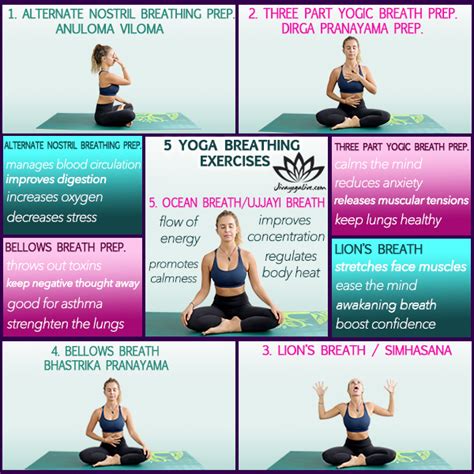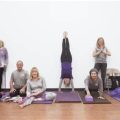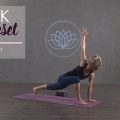Top Yoga Breathing Techniques to Enhance Focus and Mental Clarity
Yoga isn’t just about flexibility or relaxation; it’s a discipline that cultivates a strong mind-body connection, with breathwork, or pranayama, playing a crucial role. Focusing the breath helps harness the mind’s scattered energy, improving concentration, enhancing clarity, and optimizing mental focus. But not all breathing exercises are created equal. In this article, we delve into the most effective yoga breathing techniques that boost focus, supported by historical roots, practical application, and expert insights.
Introduction
In today’s fast-paced world, mental focus is more valuable than ever. Between work, digital distractions, and daily stress, maintaining a sharp, focused mind can be a challenge. Yoga, specifically pranayama, offers scientifically backed breathing techniques designed to quiet the mind, enhance cognitive abilities, and sharpen focus. This article explores the top yoga breathing practices for focus, how to apply them, and why they work, blending ancient wisdom with modern-day insights.
Key Concepts
- Pranayama: The regulation of breath to manage life energy (prana) in the body.
- Focus: The ability to concentrate on a task or object without distraction.
- Mindfulness: Awareness of the present moment, achieved through focused breathwork and meditation.
- Nadi Shodhana: Alternate nostril breathing to balance the hemispheres of the brain.
- Kapālabhāti: A rapid, diaphragmatic breathing technique, often called “Skull Shining Breath,” to clear mental fog.
- Bhramari: The “Bee Breath,” a technique for calming the nervous system and increasing mental focus.
Historical Context
Pranayama has deep roots in ancient Indian traditions, first mentioned in the Vedic texts over 3,000 years ago. Breathing techniques were considered a direct way to access and control prana—the life force. Historically, yogis believed that mastering breath could lead to mastering the mind. Techniques like Nadi Shodhana and Kapālabhāti were often practiced to prepare for meditation, enabling deeper states of concentration.
Current State Analysis
With increasing scientific attention, research has shown that breath regulation influences the nervous system, improving cognitive function, mood, and focus. Studies indicate that alternate nostril breathing (Nadi Shodhana) balances the left and right hemispheres of the brain, promoting better cognitive integration, while practices like Kapālabhāti oxygenate the brain, clearing mental clutter and enhancing focus. These techniques are now being used by high-performance professionals, athletes, and even in corporate mindfulness programs.
Practical Applications
Below are some of the best yoga breathing techniques to improve focus:
Nadi Shodhana (Alternate Nostril Breathing)
This technique involves alternating breath between the left and right nostrils, which helps balance the brain’s hemispheres, improving cognitive functions and focus.
- How to do it: Close your right nostril with your thumb and inhale through the left. Close the left nostril with your ring finger, then exhale through the right. Repeat the process in reverse.
- Best for: Balancing brain function, improving concentration, calming the mind.
Kapālabhāti (Skull Shining Breath)
Kapālabhāti is a rapid, forceful breath involving quick exhalations through the nose. It energizes the mind and clears mental fog, making it ideal for tasks requiring intense focus.
- How to do it: Sit comfortably with your spine straight. Take a deep breath in, then quickly exhale forcefully through the nose while pulling your abdomen inward. Repeat for 20-30 breaths.
- Best for: Clearing mental fog, boosting energy, improving concentration.
Bhramari (Bee Breath)
This humming breath technique soothes the nervous system and helps eliminate mental agitation, making it easier to concentrate.
- How to do it: Inhale deeply, then exhale while making a humming sound like a bee. Cover your ears for a deeper experience.
- Best for: Calming the mind, improving auditory focus, reducing anxiety.
Case Studies
| Technique | Use Case | Results |
|---|---|---|
| Nadi Shodhana | Corporate mindfulness program for enhancing employee productivity | Participants reported a 30% increase in focus during tasks requiring sustained attention |
| Kapālabhāti | Used by athletes to clear mental fog and regain focus after intense training sessions | Reported quicker mental recovery and improved clarity of thought |
| Bhramari | Practiced by students during exam preparation | Significant reduction in anxiety and improved focus during study sessions |
Stakeholder Analysis
The adoption of these techniques spans several key groups:
- Corporate employees: Use pranayama for enhancing focus and productivity in high-stress environments.
- Students: Employ breathwork to improve concentration during study and exams.
- Athletes: Use rapid breath techniques to clear mental fatigue and regain focus.
- Health professionals: Recommend breathing techniques to patients for managing stress and improving mental clarity.
Implementation Guidelines
Implementing these breath techniques into daily practice can be simple. Begin with short sessions (5-10 minutes) and gradually increase the duration as you become more comfortable.
- Start small: Beginners should start with just a few minutes a day and build up.
- Consistency: To experience benefits, practice daily for at least a month.
- Environment: Practice in a quiet, distraction-free environment.
Ethical Considerations
While pranayama offers benefits, it’s important to approach it ethically and avoid cultural appropriation. These practices have deep cultural roots, and using them without understanding or respecting their origins can lead to ethical issues.
Limitations and Future Research
Although pranayama has been shown to improve focus and mental clarity, further research is needed to understand the long-term cognitive effects of specific breathwork techniques. Limitations also include the need for proper instruction, as incorrect practice can lead to hyperventilation or light-headedness. Additionally, more randomized controlled trials are needed to validate these findings on a broader population scale.
Expert Commentary
Dr. Meera Sharma, a leading researcher on mindfulness practices, notes, “Yoga breathing techniques like Nadi Shodhana and Kapālabhāti are not just stress-relievers; they act as cognitive tools that can be applied to modern challenges. From enhancing productivity in corporate settings to helping students focus, these techniques offer diverse, practical applications in our busy lives.”
Yoga instructor and wellness expert Jonathan Reynolds adds, “The beauty of pranayama lies in its simplicity. You don’t need equipment or a lot of time. With just a few minutes of breathwork, you can dramatically improve your ability to concentrate and focus, making it a powerful tool for anyone.”








